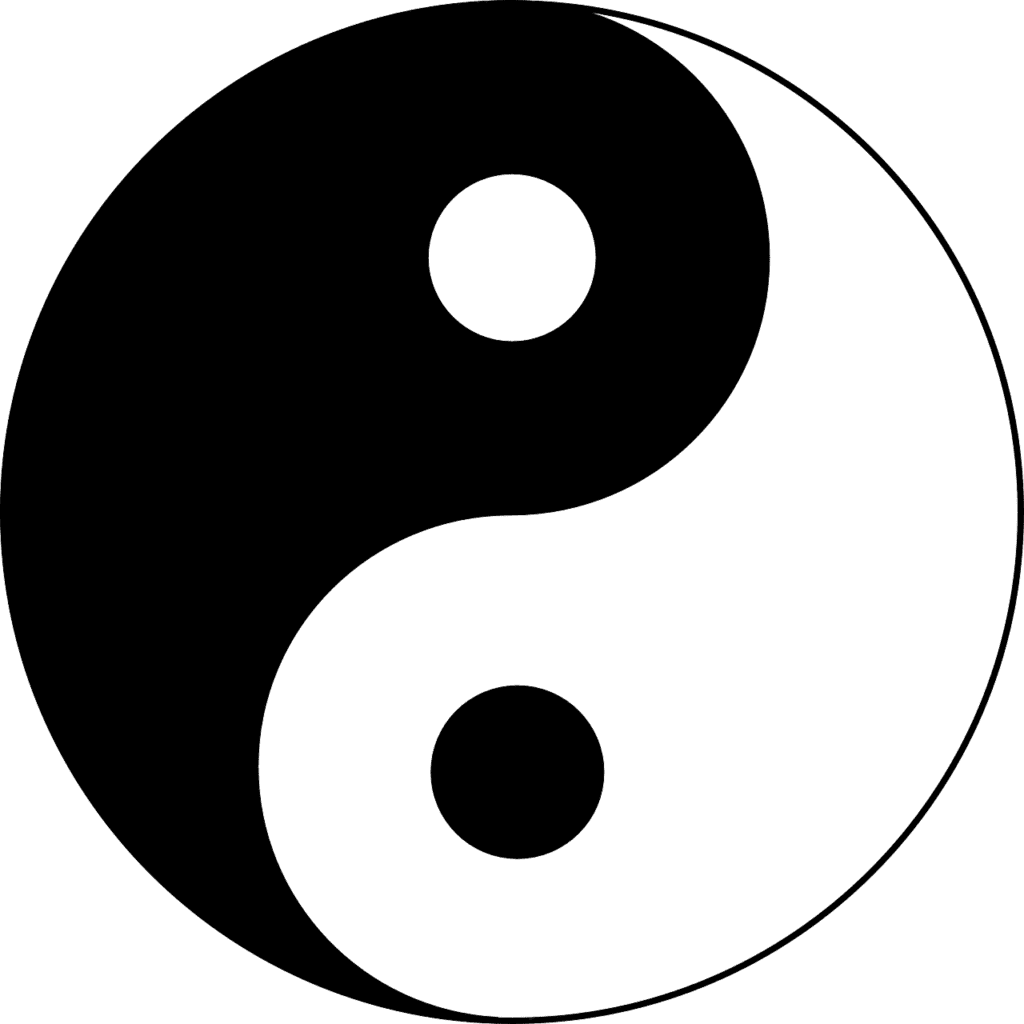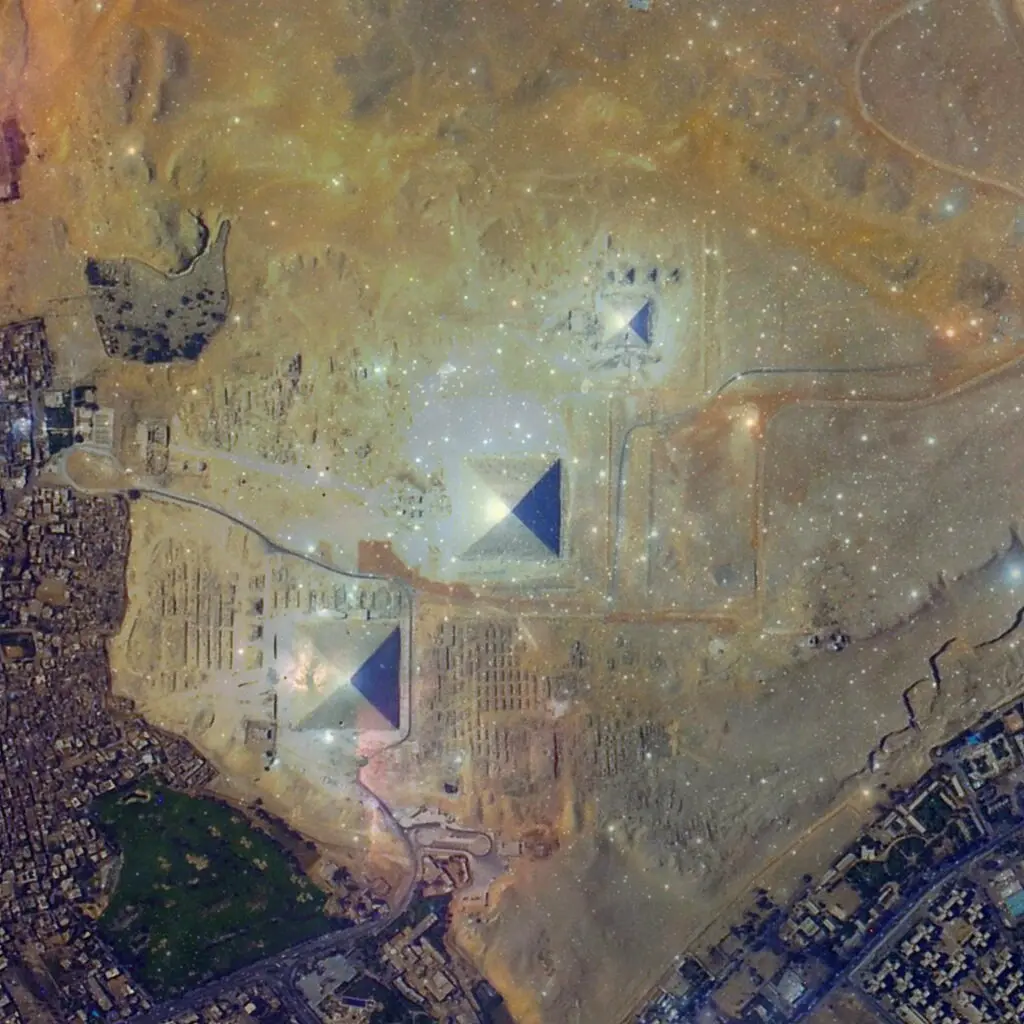Life is a riddle, wrapped in a mystery, swaddled in an enigma. We float in its vast expanse, often feeling adrift, hoping for a beacon to guide us.
Fear not! For the universe, in its boundless wisdom, has not left us untethered.
There exists the 12 Spiritual Laws of the Universe, ageless guidelines that echo the heartbeat of existence itself.
They are the undercurrents that shape the cosmos, and the whispers of the universe guiding us towards harmony with ourselves and everything around us.
In this article, we will not only be discussing the 12 Spiritual Laws but also see how it’s found in other spiritual traditions as well as how to apply them into our own lives as well.
Table of Contents
Toggle
What are the 12 Spiritual Laws of the Universe?
The 12 Spiritual Laws of the Universe serve as guiding principles that offer insight into the deeper intricacies of existence.
The 12 laws are: Law of Divine Oneness, Law of Vibration, Law of Correspondence, Law of Attraction, Law of Inspired Action, Law of Perpetual Transmutation of Energy, Law of Cause and Effect, Law of Compensation, Law of Relativity, Law of Polarity, Law of Rhythm, and Law of Gender.
Let’s go through them one by one, shall we?
The 12 Spiritual Laws of the Universe
1. The Law of Divine Oneness
The Law of Divine Oneness serves as a foundation for many spiritual traditions across the globe.
This principle emphasizes a fundamental truth: everything and everyone in the universe is intricately connected.
In Buddhism, this echoes the concept of “interbeing,” suggesting that all beings and phenomena are interrelated.
The famous adage, “We are all drops in the same ocean,” conveys a similar sentiment prevalent in Sufi poetry.
Native American beliefs often highlight the bond between mankind and nature, suggesting that the two are not separate but are instead facets of the same existence.
This law suggests that our individual actions, thoughts, and emotions have far-reaching consequences, creating ripples in the grand sea of existence.
So, when we hurt another, we’re essentially hurting ourselves. Likewise, when we show kindness, the entire universe benefits.
Understanding the Law of Divine Oneness encourages us to view the world not as a collection of isolated entities but as a harmonious whole, urging us to be conscious of our decisions and actions, as they shape not just our journey, but the collective experience of all.

2. Law of Vibration
The Law of Vibration posits that everything in the universe moves and vibrates – everything is vibrating at one speed or another.
Nothing rests.
Everything you see around you is vibrating at one frequency or another, and so are you.
However, your frequency is different from other things in the universe – hence, it seems like you are separated from what you see around you.
But in reality, you’re not separated. You’re living in an ocean of energy.
We all are.
Every sound, thing, and even thought has its own vibrational frequency.
Even modern science, particularly quantum physics, recognizes that at the atomic level, particles are always in a state of motion.
Through the Law of Vibration, we can truly grasp the dynamism of our existence.

3. Law of Correspondence
The Law of Correspondence operates on a simple premise: “As above, so below. As within, so without.”
This ancient principle asserts that there’s a harmony, alignment, and correspondence between various planes of existence – be it physical, mental, or spiritual.
Drawing from the microcosm-macrocosm principle, this law suggests that patterns we observe in the universe can also be identified on a smaller, even personal, scale.
Take, for instance, the spirals: you can find them in galaxies, weather systems, sunflowers, and even our very own DNA (if you want to dig in deeper, this is further explored through Sacred Geometry.)
Similarly, our personal experiences often mirror the larger happenings in the universe.
Your inner beliefs, thoughts, and emotions are reflected in your outer circumstances.
If there’s chaos in your mind, it’s likely you’ll see chaos in your personal life. On the flip side, inner peace and balance often translate to external harmony.
Venture into the heart of India, and you’ll hear the Sanskrit phrase, “Yatha Pinde, Tatha Brahmande,” suggesting that the individual and the universe are intrinsically intertwined.
The Kabbalistic teachings of Judaism also illustrate the deep correspondence between the earthly and the divine, pointing to a world where our physical reality is in perpetual conversation with higher realms.

4. Law of Attraction
The Law of Attraction goes deep into the philosophy that “like attracts like.”
This timeless principle says that the energies we exude, be they positive or negative, are mirrored back to us by the universe.
Ever wondered why some days, a fleeting thought becomes a reality, or why a persistent worry manifests itself?
It’s the universe playing back the notes of our deepest convictions.
Our desires, fears, and beliefs aren’t just idle contemplations; they’re powerful magnets, drawing events and circumstances into our lives.
This isn’t about sitting back and wishing upon a star. It’s an active interaction between our intentions and the world.
Just as a droplet resonates with the vastness of the ocean it belongs to, our thoughts vibrate with the limitless energies of the universe.
The Buddha himself often spoke about the power of our thoughts, famously stating, “All that we are arises with our thoughts. With our thoughts, we make the world.”
Even the Bhagavad Gita underlines that one has the right only to perform their respective duty, but they aren’t entitled to the fruits. It’s the universe that responds to the energies of the action.
So, if you focus on abundance, joy, and positivity, the universe reverberates with the same, making life a series of fortunate events.
But dwell in negativity, and the universe has its shadows ready, too.
5. Law of Inspired Action
The Law of Inspired Action isn’t about sitting around and waiting for the universe to hand you a golden ticket.
Think of it as the universe giving you a nudge and whispering, “Hey, I’ve set the stage, now it’s your turn to shine.”
It’s about feeling that itch in your gut, that whisper in your ear, that pushes you to act on your dreams.
It’s easy to daydream about best-selling novels, a healthier body, or the perfect relationship.
But have you ever noticed how the most mesmerizing stories aren’t just about a dream but about the journey taken to achieve it?
That’s where inspired action comes in.
Simply put, to manifest our desires and live a fulfilling life, mere intention isn’t enough; it must be coupled with action that comes from a place of inspiration, understanding, and purpose.
This one really hits home for me, because this was me for the longest of times until I finally got off my butt to start this blog.

6. Law of Perpetual Transmutation of Energy
The Law of Perpetual Transmutation of Energy asserts that all energy is in a constant state of evolution.
Just as a river’s waters never stay still, energy, too, is always on the move, always transforming.
From the blooming of a flower to the changing colors of the skies at sunset, energy is perpetually in flux, morphing from one form to another.
This includes our very own energies.
The hopes and fears we carry, the dreams we dare to dream, all have the power to change our energetic frequency.
By understanding this, we realize that we hold the potential to direct this ever-shifting energy.
Historically practiced in Medieval Europe and ancient Egypt, alchemy wasn’t merely about transmuting metals into gold.
At its base, alchemy was a spiritual journey emphasizing the transformation of the soul.
This alchemical process symbolized the soul’s journey from base instincts to spiritual enlightenment.
Similarly, the ancient Chinese philosophy of Taoism speaks of the Tao as the ultimate source of all existence, constantly flowing and changing.
There’s also the concept of “Prana“, the life force that flows through everything and can be cultivated and redirected through practices like yoga and meditation.
Realize that within us, lies the ability to transform negative energies into positive ones, to shape our realities by channeling our energies purposefully.
The world around us, with its ceaseless cacophony of energies, is proof of the limitless possibilities that await when we are able to harness and direct our inner power.

7. The Law of Cause and Effect
The Law of Cause and Effect is very simple, and it’s probably something we are all aware of.
Every action has a reaction.
Each choice you make, every thought you entertain, sets off a chain of events.
Like dominoes falling in succession, one event precipitates the next.
You’re not merely a spectator; you’re a participant.
Every step you take, intentional or not, sends waves through the universe, echoing back to you.
Your actions, your thoughts, even the silent wishes of your heart, all have power.
They create ripples, both seen and unseen, shaping the course of your journey.
Your life.
This law is basically a concept rooted in Hinduism and Buddhism, and another word I’m sure you’ve heard of: Karma.
8. The Law of Compensation
The Law of Compensation revolves around the notion that the universe is a system of balance.
Adding on from the previous law, for every action, there is not only an equal and opposite reaction, but also a corresponding reward.
In the grand scheme of life, what you give is what you get.
Every good deed, effort, or contribution you make, the universe notes and, in time, returns to you in kind.
Think beyond materialism.
It encompasses experiences, opportunities, relationships, and even challenges designed for growth.
When you extend kindness, share your resources, or invest your time in a worthy cause, you create an energy of positivity.
This energy doesn’t dissipate; instead, it circles back, finding its way to you, often amplified.

9. Law of Relativity
Every situation, challenge, or problem we face is relative.
And no, this isn’t Einstein’s Theory of Relativity.
Instead, the Law of Relativity posits that nothing is inherently good or bad, big or small, easy or difficult; instead, it gains its nature when compared to something else.
In Buddhism, the concept of emptiness (sunyata) emphasizes that things do not possess inherent meaning; instead, their essence is determined in relation to other things.
This teaching encourages the realization that our perceptions and feelings about a situation can shift depending on our viewpoint and what we compare it to.
In Hindu philosophy, the ancient scriptures often teach about “Maya,” the illusionary nature of the world.
Everything we perceive is relative and not absolute, suggesting that our human experiences are shaped by comparison and contrast.
Epictetus, a prominent Stoic and a Greek philosopher, often spoke of imagining worse scenarios to better appreciate one’s current situation, though I’m not sure if it’s always the best choice to do so.
While Christian teachings often encourage believers to consider their struggles in light of the trials faced by figures like Job or Jesus.
Your hardships and struggles, no matter how daunting they seem, can always appear bigger or smaller depending on what you compare them to.
Think of a personal challenge you are currently facing.
Alone, it may seem insurmountable.
However, when held up against a larger backdrop—say, the vast array of human suffering or the expansive timeline of the universe—it may appear minute.
But when compared to simpler, more trivial matters, it might seem monumental.
It’s all about perspective.
This law encourages us to view our problems and blessings in relation to others and the greater whole.
In the end, no matter how it feels in the moment, our experience is just a piece of a much larger puzzle in the making.

10. Law of Polarity
The Law of Polarity underlines the fundamental truth that everything has an opposite.
In the vast expanse of the universe, there’s always a balance: for every north, there’s a south; for every in, there’s an out; for every success, a failure.
The Yin and Yang.
These opposites are not separate entities but two sides of the same coin.
Wherever you find light, darkness isn’t far behind.
And in every moment of sadness, there’s potential for happiness.
The existence of one verifies the other.
By internalizing the Law of Polarity, you recognize that in every challenge, there’s an opportunity waiting to be unveiled.
Life is a play of these dualities, and understanding this law equips you to see the bigger picture, even in seemingly contrasting events.
As the saying goes: After a storm, comes a rainbow.

11. Law of Rhythm
Just as the tides rise and fall, the seasons change, and day turns to night, there is a rhythm to everything in the universe.
This law illuminates the inherent order and patterns observed in the cosmos.
All of life dances to a particular tune, moving in cycles.
You, too, are part of this grand symphony.
The beat of your heart, the breaths you take, the rise and fall of your emotions, all follow a rhythmic pattern.
There are times of growth and times of rest, periods of activity and periods of reflection. Recognizing these natural rhythms is essential.
For in doing so, we can harmoniously align with the universe instead of resisting its flow.
In Buddhism and Hinduism, the cycles of birth, death, and rebirth, known as samsara, mirror the rhythmic nature of existence.
Within Hinduism, the continuous cycles of creation, preservation, and destruction, symbolized by the trinity of Brahma, Vishnu, and Shiva, lay down the cyclic laws governing existence.
The cycles of life are not there to disrupt, but rather to guide and provide insight.
By understanding the Law of Rhythm, you can navigate the highs and lows of life with grace.
Remember, every phase is temporary.
Embrace the rhythms, for they are the heartbeat of the universe, reminding us that change is not just inevitable but also beautifully orchestrated.
We are all part of this rhythm, forever flowing, ever-changing, and eternally connected.
Just surrender and go with the flow.

12. Law of Gender
The Law of Gender does not merely speak of the physical attributes of male and female but dives in a bit deeper, into the very core of all creation.
Within everything, there are masculine and feminine energies, active and passive forces.
Once again, this balance is vividly illustrated through the interplay of Yin and Yang.
Hinduism showcases this harmony through the Ardhanarishvara, an androgynous deity that is both Shiva and his consort Parvati.
It’s a powerful representation of masculine and feminine energies existing not as separate entities but as complementary facets of a single divine essence.
The Kabbalistic Tree of Life itself contains pillars representing masculine and feminine energies.
Within the Tree, the central pillar is known as the Pillar of Equilibrium.
To its right is the Pillar of Mercy, representing the masculine, or “Chesed” energy. To the left is the Pillar of Severity, embodying the feminine, or “Gevurah” energy.
Chesed represents the outpouring, expansive, and giving energy (often seen as masculine), while Gevurah symbolizes the receiving, form-giving, and boundary-setting energy (often associated with the feminine).
As you can see, masculine and feminine energies are not opposing but complementary, working together in harmonious unity.
The masculine energy is assertive, forward-moving, and analytical, while the feminine energy is nurturing, intuitive, and receptive.
Both are essential for creation, growth, and balance.
Like the two sides of a coin, they are different yet part of the same whole.
It’s not just in living beings, but in thoughts, patterns, and cycles — everywhere in the universe, this balance can be observed.
Understanding the Law of Gender enables you to recognize and honor both energies within yourself.
It invites us to strike a balance, ensuring neither is suppressed or overlooked.
Life is not about choosing one over the other but about harmonizing both to find our true essence.
By embracing both the active and receptive forces within, we can harness the true power of creation and collaboration.













2 Responses
thank you for such a beautiful, self-awakening article
Hi Sithembile,
Thank you very much for your kind comment. I’m so glad it was able to helpful to you!